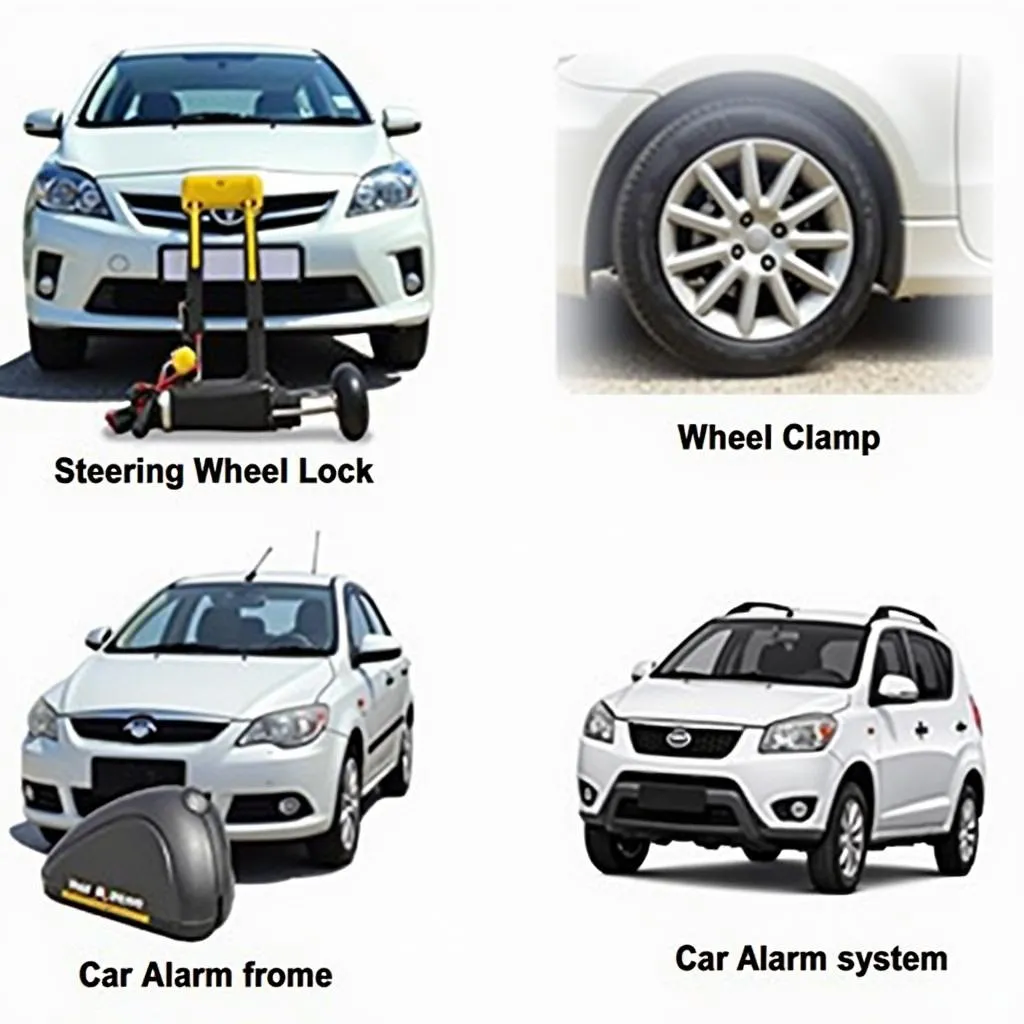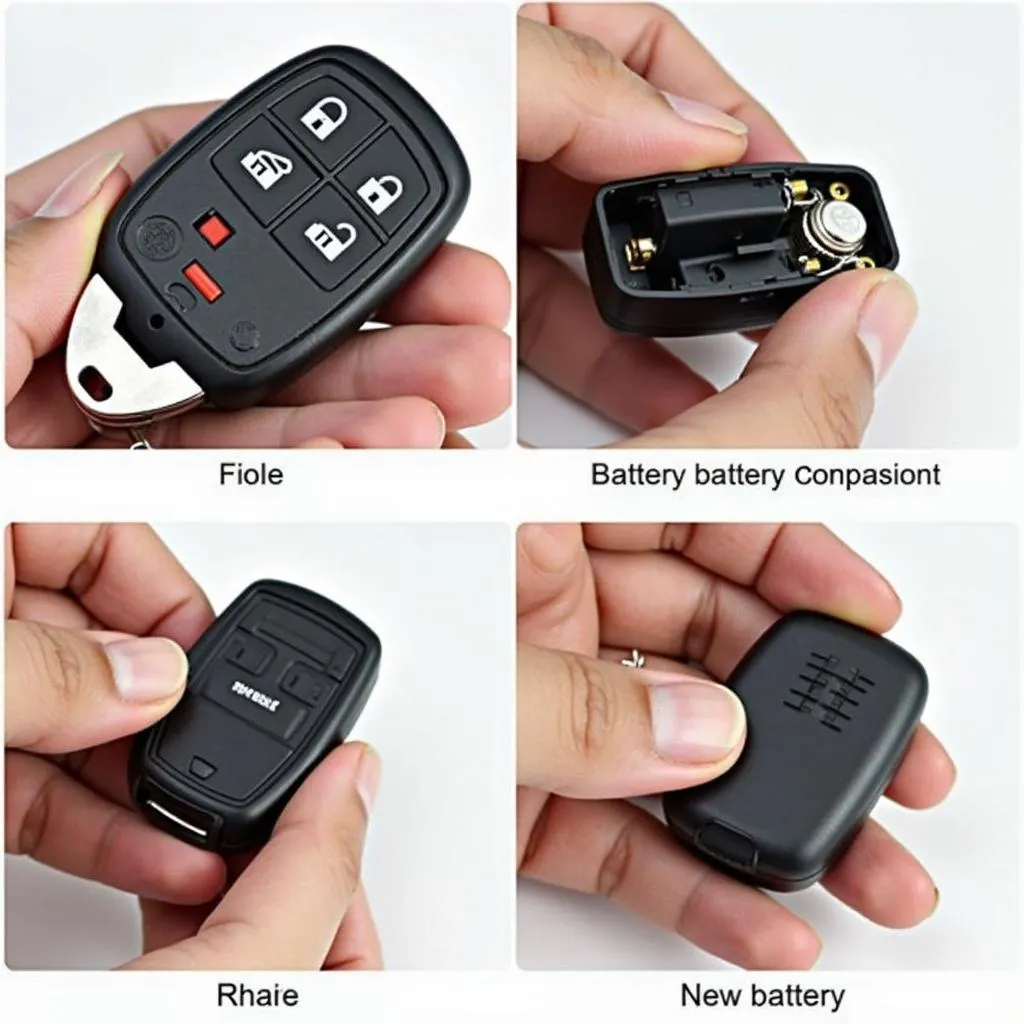In today’s world, car theft is an unfortunate reality. Thankfully, advancements in technology have led to sophisticated security measures to deter thieves and keep your vehicle safe. One such invention is the anti-theft device, a system designed to prevent unauthorized access and theft of your car.
Understanding Anti-Theft Devices: From Basic to Advanced
Anti-theft devices range from simple mechanical deterrents to complex electronic systems integrated into your car’s computer. Let’s break down the most common types:
1. Traditional Anti-Theft Devices:
- Steering Wheel Locks: These visible deterrents make it physically difficult to steer the car, discouraging opportunistic thieves.
- Wheel Clamps: A highly visible and robust solution, wheel clamps immobilize the vehicle by attaching to the wheel, making it impossible to drive.
- Window Etching: Etching your Vehicle Identification Number (VIN) onto the windows makes the car less desirable to steal and easier to trace.
2. Electronic Anti-Theft Devices:
- Immobilizers: These systems prevent the engine from starting without the authorized key being present, usually utilizing a transponder chip in the key that communicates with the car’s computer.
- Alarm Systems: These devices use sensors to detect forced entry or suspicious activity around the vehicle, triggering a loud alarm to scare off thieves and alert the owner.
- GPS Tracking Systems: A GPS tracker allows you to pinpoint your car’s location in real-time, aiding recovery efforts in case of theft.
 Car anti-theft devices
Car anti-theft devices
Recognizing When Your Anti-Theft System is Engaged:
Sometimes, your anti-theft system might be the reason you can’t start your car. Here’s what to look for:
- Rapidly Flashing Dashboard Lights: A quickly blinking security or immobilizer light usually indicates that the system is armed and has detected a potential threat.
- Unusual Sounds: Hearing your car horn honking intermittently or a siren-like sound coming from your vehicle could mean your alarm system is activated.
- Engine Cranks but Won’t Start: If your engine cranks but refuses to turn over, it could be due to the immobilizer not recognizing your key.
Troubleshooting Anti-Theft System Issues:
Experiencing problems with your car’s anti-theft system can be frustrating. While we recommend consulting a professional mechanic or an auto electrician, some basic troubleshooting steps might resolve the issue:
- Check Your Key Fob Battery: A weak battery in your key fob can disrupt the communication between your key and the car’s immobilizer. Replace the battery and try starting the car again.
- Lock and Unlock Your Car Manually: Use your physical key to lock and then unlock the driver’s side door. This action can sometimes reset the anti-theft system.
 Replacing car key fob battery
Replacing car key fob battery
Common Questions About Anti-Theft Devices:
- Can I install an anti-theft device myself? While some basic devices can be owner-installed, professional installation is recommended for most electronic systems, ensuring proper integration with your car’s electronics.
- What are the latest advancements in car security technology? Cutting-edge technologies like biometric authentication (fingerprint or facial recognition) and smartphone-controlled security systems offer even more advanced levels of protection.
- Does Cardiagtech offer diagnostic services for anti-theft systems? Yes, Cardiagtech specializes in automotive electrical systems, including anti-theft devices. We provide comprehensive diagnostic services to identify and resolve any issues you may be facing.
If you’re experiencing issues with your car’s electrical system, including your anti-theft device, don’t hesitate to contact CARDIAGTECH. Our team of skilled technicians can provide expert diagnosis, repair, and programming services to get you back on the road safely and securely.

